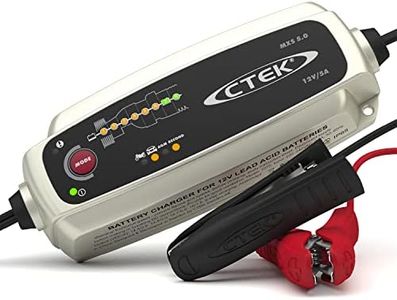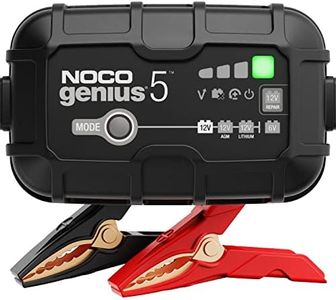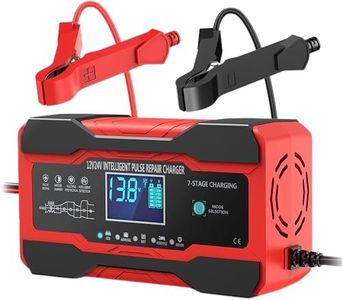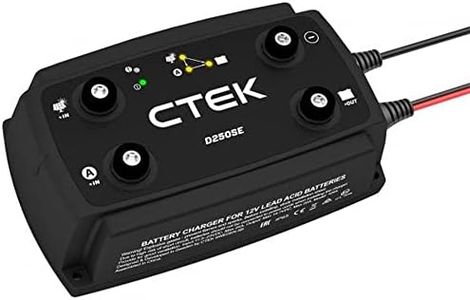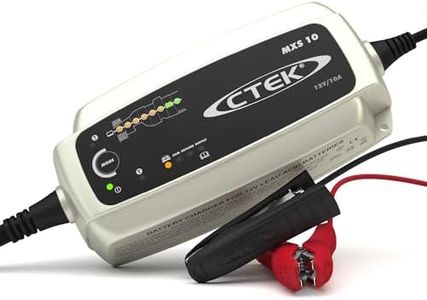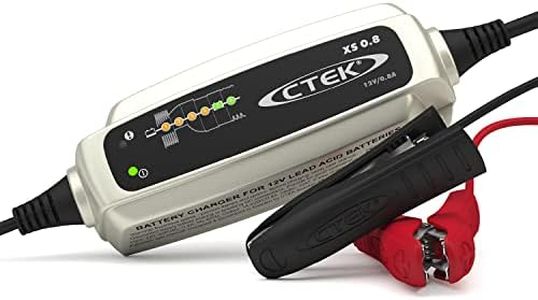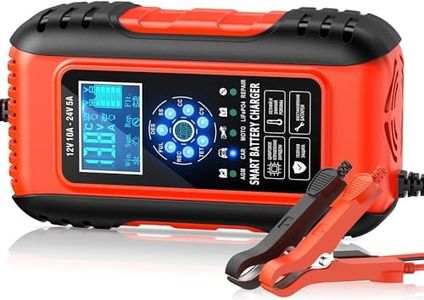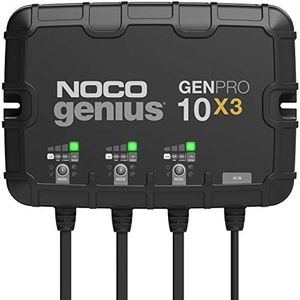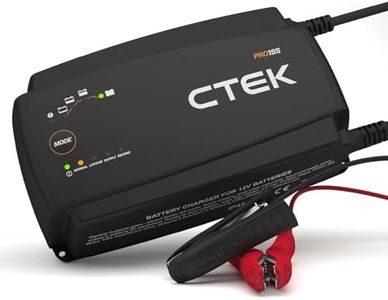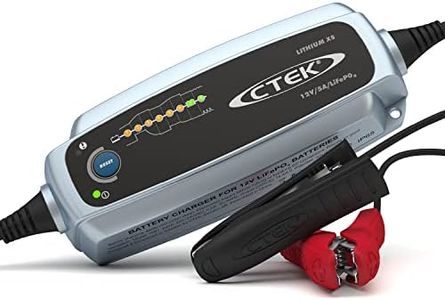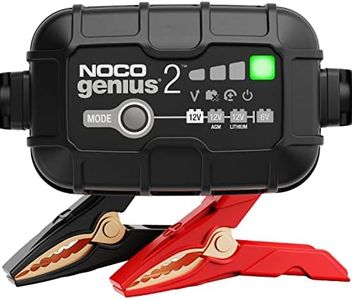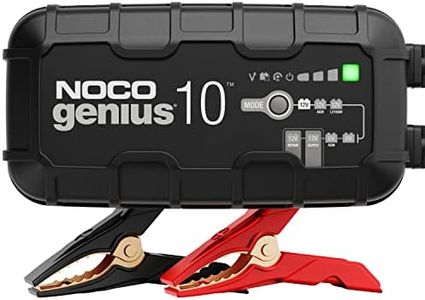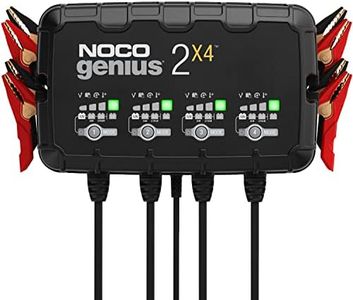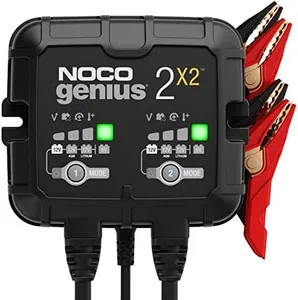We Use CookiesWe use cookies to enhance the security, performance,
functionality and for analytical and promotional activities. By continuing to browse this site you
are agreeing to our privacy policy
10 Best Battery Maintainers
From leading brands and best sellers available on the web.Buying Guide for the Best Battery Maintainers
Picking the right battery maintainer is crucial for keeping your vehicle’s battery healthy, especially if you don’t drive it often. Battery maintainers, sometimes called trickle chargers, keep your battery charged without overcharging it. When choosing one, focus on your battery type, the size of your battery, how simple you want the maintainer to be, and any extra features you might need. Knowing what specs matter will guide you to the best fit for your situation.Amperage (Charging Current)Amperage in a battery maintainer tells you how quickly it delivers current to your battery. Higher amperage charges a battery faster, while lower amperage is gentler and best for maintaining a charge over a long period. If you just need to keep a battery healthy while stored, a lower amperage (often 0.5A to 2A) is perfect, as it minimizes wear. If you occasionally need a quicker top-up or use the maintainer to charge a somewhat depleted battery, look for models offering 2A to 5A. Match the amperage with your specific needs—gentle maintenance for long-term storage or slightly more power for regular top-ups.
Battery Compatibility (Type and Voltage)Not all battery maintainers work with all battery types or voltages. Most commonly, maintainers support lead-acid, AGM, gel, or lithium batteries, and are available in 6V or 12V versions, depending on your vehicle (cars and motorcycles usually use 12V, some classic vehicles or smaller equipment use 6V). It’s important to check your battery type and voltage first, and then choose a maintainer that specifically supports those. Using an incompatible maintainer might not work or could even damage your battery.
Automatic Shutoff and Float ModeThis feature is all about safety and convenience. Automatic shutoff means the maintainer will stop charging when the battery is full, then switch to a maintenance (float) mode that keeps the battery topped up without overcharging. This is especially important if you want to leave the maintainer connected for long periods. If you're prone to forgetting or want true 'set-and-forget' operation, look for maintainers with these features—this minimizes risk of damaging your battery from overcharging.
Ease of Use and DisplayBattery maintainers vary in how user-friendly they are. Some come with simple indicator lights showing 'charging' or 'ready,' while others offer more advanced digital displays with status updates and diagnostics. If you want things simple, a basic design with clear lights may be best. If you like more feedback and control, look for a model with a digital readout. Consider who will be using it and whether advanced features are helpful or just confusing.
Safety FeaturesSafety features like spark-proof connections, reverse polarity protection, and short-circuit protection help prevent accidents and damage during use. These are especially important if you’re new to battery maintenance or worried about making mistakes. If you know you’ll use the maintainer in less-than-ideal conditions or might not always hook it up perfectly, prioritize models with built-in safety features for peace of mind.
